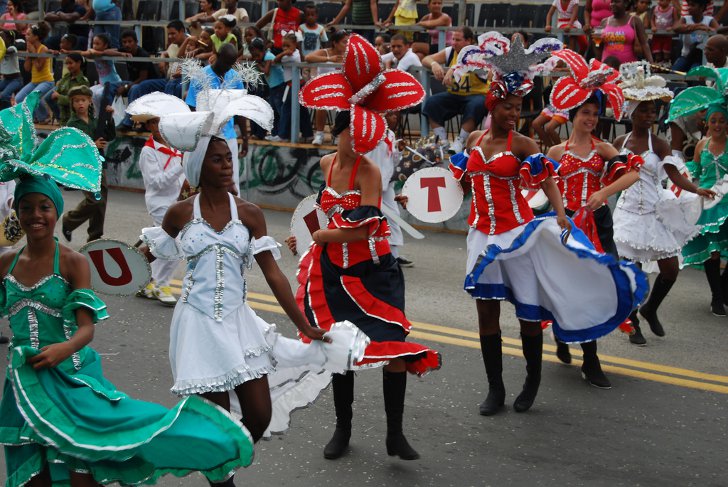Originally, Carnival is a Christian festive season that occurs before Lent and culminates on Shrove Tuesday (Mardi Gras). European colonizers brought the tradition to the Caribbean, where it has evolved by incorporating various elements from African, Creole, and other cultures. As a result, Carnival celebrations have a unique flavor in each country and territory of the Caribbean, Cuba being no exception.
The Carnival of Santiago de Cuba is unique in that it has evolved not from the pre-Lenten Carnival, but from semi-religious summer festivals called the mamarrachos. The mamarrachos were festivities held on various saint days throughout the summer: St. John’s Day (June 24), St. Peter’s Day (June 29), St. Christina’s Day (July 24), St. James the Apostle’s Day (July 25), and St. Anne’s Day (July 26). Despite their religious origin, these festivals were mostly occasions for public jubilation with music and dance. They were held as early as the 17th century, but the first recorded mention of the word mamarrachos is dated 1757.
The mamarrachos were celebrated in many Cuban cities and towns, including Santiago de Cuba. They featured comparsas (groups of singers, musicians and dancers in bright costumes) participating in impromptu parades and street parties, masked balls, torchlight pilgrimages, and, of course, delicious food and plenty of alcohol. The festivities culminated with a grand parade called montompolo.
Over the years, the mamarrachos of Santiago de Cuba have evolved into the modern Carnival. In 1953, the Santiago de Cuba Carnival played an important role in the Cuban Revolution: Fidel Castro and his rebels chose July 26 as the day of their attack of the Moncada Barracks in Santiago de Cuba in hopes that the annual fiesta would serve as a distraction. The attack failed, but it was the spark that ignited the Cuban Revolution, which eventually ended Fulgencio Batista’s dictatorship.
The present-day Santiago de Cuba Carnival is a celebration of both the city’s patron saint, Saint James the Apostle, and the anniversary of the attack of the Moncada Barracks, which is a public holiday in Cuba. It is the largest traditional festival in Santiago and the second-largest Carnival in the country after the Havana Carnival.
The Carnival of Santiago de Cuba is particularly famous for its comparsas. Comparsas are large groups of dancers, singers, and musicians that perform on Carnival floats. Within each comparsa, singers and musicians form a smaller group called the conga that plays the traditional carnival music also called conga. The rest of the comparsa is made up of dancers in elaborate costumes who perform a choreographed routine to the music played by the conga.
The main highlights of the Santago Carnival are the opening Fiesta del Fuego (fire party) and nightly processions where floats and comparsas make their way through the city. They are followed by street parties that occur throughout Santiago, lasting until the wee hours of the morning.

Photp: SAN-T




